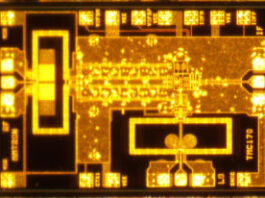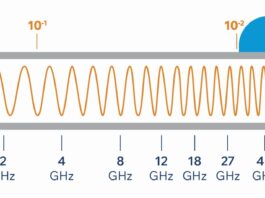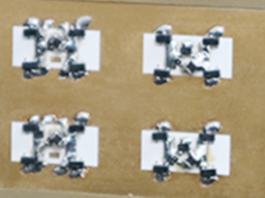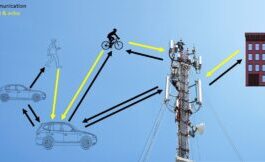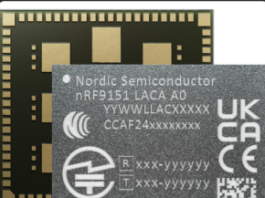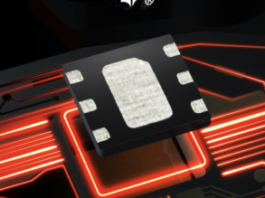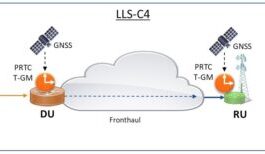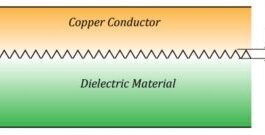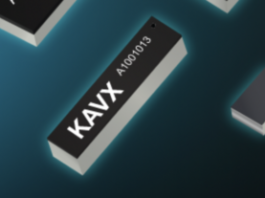
Using refraction instead of reflection or phased arrays, MatSing has created antennas that produce multiple beams.
If you’ve recently attended a game at AT&T Stadium in Dallas, Allegiant Stadium in Las Vegas, Amalie Arena in Tampa, or even attended a presidential inaugural and used your phone, then you’ve probably used an antenna by MatSing. The California-based company has developed what it calls a “Lens antenna.” What is a lens antenna and how does it work? To find out, 5G Technology World spoke with Leo Matytsine, executive vice president at MatSing.

Figure 1. A dish antenna relies on reflection to focus a beam. A lens antenna uses refraction to create multiple isolcated electromagnetic beams. Image: MatSing
EE World: How does a lens antenna work and how does it differ from a dish or phased array?
Matytsine: There’s a fundamental difference in how it works. Take a dish antenna, which focuses a signal so it can travel longer distances. The larger the dish, the more focused the beam. Dish antennas use the principal of reflection. In the case of phased arrays, you use multiple antenna elements and shift the phase of a signal. The more antenna array, the more focused the beam.
Lens antennas, which are essentially Luneberg lenses, use refraction, not reflection. Think of how your eye works. Eyes have lenses that focus incoming light on your retina. Using refraction lets you have multiple independent beams from multiple feeds, each creating a separate beam (Figure 1). The lens antenna works both for transmitting and receiving signals.
One of the issues with phased arrays is isolating multiple beams. Without isolation, beams can interfere with each other. That instantly reduces capacity and throughput. In a lens antenna, each beam is independent. There are no shared resources other than the lens itself. The elements are not in any way connected, resulting in true isolation of the beams. The beams are tight and that lets us create many sectors from a single antenna.

Figure 2. A Lens antenna uses layers of different dielectric constants to create multiple beams.
EE World: What is the physics behind the refraction?
Matytsine: They key science is in the materials of the lens. The lens structure is like an onion (Figure 2). Each layer uses a different dielectric (meta) material. The lens antenna has a dielectric constant of 2 at the core and of 1 at the shell, which is similar to air. The goal is to have as many layers as possible to smooth the transition from a dielectric constant of 2 to 1. The problem is in the materials themselves, you need, for example, a dielectric permittivity of 2, 1.9, 1.8, etc. at leach layer but such materials don’t exist in nature.
A second key challenge comes from losses. If your dielectric material has losses, it’s temperature will rise.
A third issue is weight. The antennas can’t get too heavy. Plastics such as Rexolite are typical dielectric materials used for such purposes, but are too heavy and have significant losses. Unfortunately, it’s hard to control the dielectric constant of this material over large areas. It’s possible to get enough consistency at high frequencies because the antenna aperture is small enough. For example, you often see lens antennas under fighter jets because of the radio frequency used by the military. At sub-6 GHz telecom frequencies, you need a larger aperture because of the longer wavelengths involved.
Even if you can control the dielectric constant, you’ll still have to contend with weight because of the large antenna sizes. A 1-m lens can weigh close to 500 kg. There are no materials available to use in commercial applications. My father, brother, and I started the company to address this problem. My father’s background is in materials science. He created the material that we use in our antennas. We can accurately control the dielectric constant and the material is lightweight and low loss. The material is also broadband, meaning same lens can function for all frequencies below 6 GHz. It can handle several beams for low band, mid-band, and C-band.
We originally developed the materials after being inspired by the Square Kilometre Project and found applications below 6 GHz for telecom.
EE World: The wireless industry is building an infrastructure based on phased arrays. There are several companies selling antennas and others selling beam-steering ICs. The chips handle the steering control. How do you accomplish the beam steering with lens antennas?
Matytsine: We have a different approach. You can have a radio for each single beam to get the needed capacity. The next step is sectorizing the phased array to get isolation. If you have too many sectors (beams) in a phased array, capacity drops because of interference. The lens antenna creates multiple beams that don’t interfere with each other.
EE World: How focused are the beams? Does it widen with distance?
Matytsine: All beams widen with distance. A large antenna will focus beams better than a small antenna.
EE World: If a single lens antenna can handle frequencies from 600 MHz to 6 GHz, that’s a 10x range of wavelengths. Is the antenna size based on the longest wavelength or that range?
Matytsine: That’s correct. If you really need 600 MHz and need a second beam to increase capacity, you need a bigger aperture, at least 2.5x in size over that of a single beam. You can use a single lens to cover the full frequency range, but your beam width would be different at different frequencies (or in another words you can have different number of beams per 120 sector for different frequencies).

Figure 3. Amalie Arena in Tampa, Florida uses MatSing antennas to beam cellular signals to hockey fans. Image: MatSing
EE World: How many beams do you need to cover Amalie Arena? How many antennas?
Matytsine: We started with outdoor events where we need many sectors and large antennas. For venues (Figure 3), we built antennas that handle additional rows of sectors. We can achieve up to 48 beams from a single antenna. Our antennas typically cover 120 degrees. For example, an antenna with twelve beams has each beam covering 12°. We have four rows of twelve beams. The total number of sectors depends on the venue and the network. We’ve seen venues with close to 200 sectors. At AT&T Stadium in Dallas, they have four key locations using several of our with 48 beam antennas per location and that’s enough to cover the entire stadium with cellular signals. The number of sectors also depends on where in a venue the antennas can be located.

